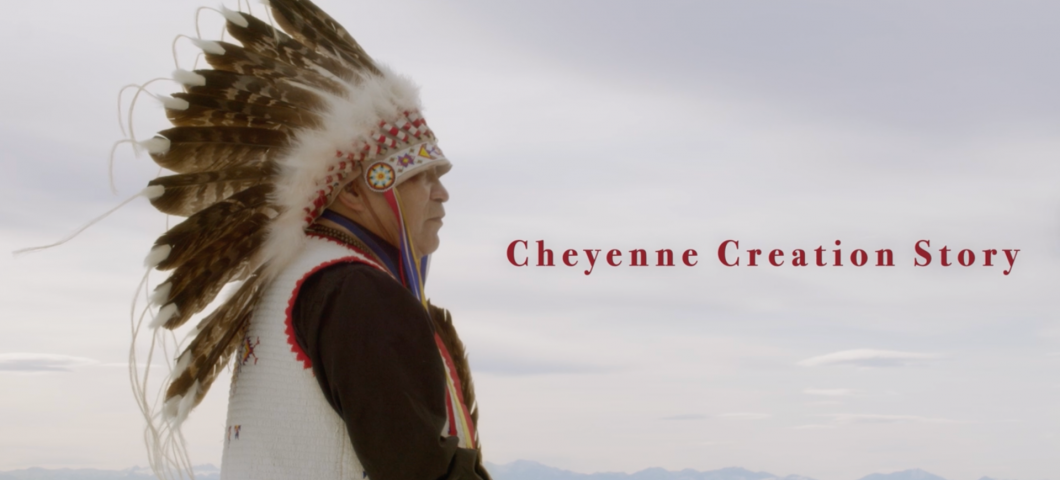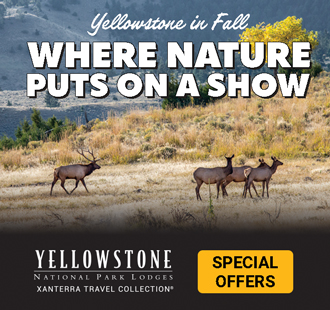By Frankie Beer MSU News Service
BOZEMAN — Nellie Whiteman tended to sit in the back of the classroom in Montana State University’s Visual Communications Building.
The film student worried that because she felt different from her classmates, having come from the Northern Cheyenne Reservation, they wouldn’t get along. Whiteman, who is Northern Cheyenne and Oglala Lakota, was the first in her family to attend a four-year university, and she experienced culture shock when she moved to college from Lame Deer, where she was surrounded by family and people who looked like her.
But she took the leap to direct her first film at MSU during her junior year, then another, titled “Cheyenne Creation Story,” in her senior production class. She believed the stories were important to tell, which propelled her to pitch them and lead student crews despite her insecurities.
“I need to do this,” said Whiteman, who graduated in May with a degree in film and a minor in Native American studies. “If I don’t, who else will?”
“Cheyenne Creation Story,” which is about six minutes long and documents the oral history of how the Cheyenne people came to be according to their traditional beliefs, will be screened at the Red Nation International Film Festival in Los Angeles, held Nov. 10-16. The 30-year-old event is one of the largest Indigenous film festivals in the nation and includes an awards ceremony broadcast live on Red Nation Television Network.
Entering “Cheynne Creation Story” in at least five festivals was a requirement for Whiteman’s senior production class, taught by instructor Alexa Alberda and assistant professor Ben Leonberg in the School of Film and Photography. Students spent the spring semester crowdfunding, planning, filming and editing in a condensed version of real-world film production, Alberda said. They used resources including MSU’s editing bays and industry-standard cameras to create the films.
“I like to tell the students that we make art to be seen, not to hide it in our closets,” Alberda said. “When they’ve put months and months of work into something, we really want to push them to put it out in the world, even if it’s scary.”
As a director, Whiteman was involved in everything from initial storyboarding with her producer to reviewing captions with her editor. Her team of fellow seniors included director of photography Anna Bouressa, sound designer Simon Gatte, behind-the-scenes manager Jonathan Gibson, editor Carter Hudson and producer Maddison Whitaker-Barnett.
The film is told in Cheyenne by Northern Cheyenne Chief Phillip Whiteman Jr., who sat in the drum room in MSU’s American Indian Hall and described how the Creator sent four spirits to find a beautiful place to create humans. The interview-like setup is meant to feel as though an elder is having a conversation with the viewer, Nellie Whiteman said. Phillip Whiteman is also Nellie Whiteman’s father and a former cultural adviser for the film “Hostiles,” a drama starring Christian Bale.
It was important, Nellie Whiteman said, to have the story told in the Cheyenne language and captioned with English subtitles to preserve how it was traditionally passed down through generations: orally and in the Native tongue. She said Native Cheyenne speakers have been dwindling for a multitude of reasons, including the toll of COVID-19 on the tribe’s older generations and the reluctance of elders to share cultural knowledge after attending Native boarding schools in the 19th and 20th centuries. The schools forcibly assimilated Native youth to American culture and taught them to suppress their traditional practices.
“I felt like I was able to make something I was proud of and that is for my community and where I come from,” said Nellie Whiteman, who hopes to share the film online in the future. “And it didn’t just help me, it’s helping them in the long run.”
Bouressa, who graduated from MSU in May with a degree in integrated lens-based media, said her favorite scene was the film’s opening shot of Nellie Whiteman’s father at Drinking Horse Mountain, a trail northeast of downtown Bozeman. As his headdress feathers fluttered in the wind, Bouressa angled her camera to make him appear as though he towered above her, but her tripod wouldn’t collapse as low as she wanted.
“Our producer, Madison, was like, ‘Here, use me.’ She laid down on the ground, and I propped the camera up on her back,” Bouressa said, laughing.
Bouressa came to MSU from Eugene, Oregon, planning to study business. Photography had always been one of her passions, but she couldn’t imagine it as a legitimate career. She said that perception changed once she decided to switch majors and discovered her professors’ success in the industry.
“For the first time in my life, I was in school and actually learning about something that was interesting to me and that I was already engaged in,” she said.
After graduation, Bouressa became a photographer for Outside Bozeman magazine, then a photo assistant in Oregon, working on projects for organizations like the Oregon Department of Human Services.
Nellie Whiteman’s post-graduate plans included completing a fellowship at the Lone Peak Film Festival in Big Sky, receiving mentorship from directors of the documentary “Bring Them Home.” The fellowship was the first step toward her dream of becoming a director.
“Entering [my team’s] film into festivals and actually getting responses definitely boosted my confidence,” she said. “Like, OK, maybe I can actually be a director.”














